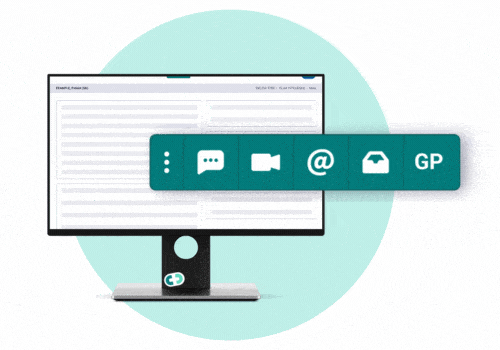Another view: of federation
- 31 March 2015

General practice is under pressure to change. The government has meddled with the pension scheme, causing anyone over the age of 55 to consider part or full retirement.
We’ve under-recruited into medical school for years, and general practice lacks popularity as a specialty. Put those factors together, and I have never known a time when there have been more job vacancies advertised, and fewer filled.
Perhaps more worryingly, I’ve also never known so many people worry about the viability of their practice.
From many applications to almost none
My current senior partner tells the story of how he fought off more than 100 applicants for his job. Five local practices are currently advertising for partners. Three, I know, haven’t had a single applicant, despite us being in lovely, leafy south Cheshire.
I’m worried as my surgery is about to advertise for two positions. Am I kidding myself that our reputation and quality will attract people where other surgeries haven’t?
One local practice has four of its most senior partners thinking of retiring in the next three years. I suspect the practice won’t be viable without them.
I could go on with my tale of woe. The average consultation rate has increased from three to almost ten. Demand to open all hours and all days has never been higher.
The patients have never been older or more ill. They present with ever more complex diseases, with a greater expectation of good care, when we have no more money to deliver more with.
However, I’m not after your sympathy. It’s just that understanding what is going on may help you understand why the proposed solutions are being proposed and why they might actually happen.
The EU may be an unlikely model, but…
For some time, august bodies have been trying to warn general practice that it will need to change. Most have been talking about federating.
This always makes me think of the EU but – hopefully – with less politics. Federating is working together to cut costs, improve productivity and essentially be a bigger fish in the sea. Instead of 8000 corner shops perhaps we need to be 200 chain stores?
Some areas have already gone for super surgeries, joining practices together. This makes some sense. Locally there hasn’t been any appetite for this, but that might change. We have several practices in one large building and if they all started to falter it would seem sensible for them to merge.
For the moment, though, we have gone down the federation route. Along with the ex-chief executive of the old primary care trust, Mike Pyrah, I have helped to set up what I term a type 2 federation.
A type 1 federation is often an ex-out-of-hours provider. It is usually set up as a share-based, for-profit organisation, looking externally to get contracts to make money.
I don’t have problems with this, but it causes problems – conflicts of interest. It makes partners suspicious. To succeed it needs contracts to be tendered and – perhaps most importantly for me – it fails to deliver the transformation of primary care that is needed for it to survive.
A type 2 federation is the opposite. It is usually setup as a not-for-profit and it is more concerned with delivering better primary care. It works with partners not against them. It engages its clinicians and in some ways it’s a half way house to merging.
Federate with care
While merging practices (and I’ve done that too) can cause problems, getting them to work together can be just as problematic. While they may not feel threatened in terms of existence, they will be reluctant to hand over power to the central body even when it only has their interests at heart (see what I mean by it sounding like the EU?)
So we are approaching this carefully. We have been bidding for funds for our member practices and have been quite successful at bringing them new income –over £600,000 so far.
We have also been thinking about other things we can do; centralised procurement and purchasing spring to mind. I’ve been thinking about our IT strategy and my thoughts are splitting into what I might call the front-of- house strategy and the back-of-house one.
Front-of-house is about delivering services to patients. Key ideas for our federation are to improve access to patients and to reduce the variability between practices; getting people to work together to common protocols and workflows while maintaining individual identities and flavours is the goal.
We have a bid in for the Wave 2 PM Challenge fund – I’ve no idea if we will get it – we might hear any day. But our underlying idea is to offer services mornings, evenings and at weekends in a hub and spoke arrangement.
Each locality would be open, rather than each practice, which would save costs. Patients from any practice will be able to be seen, and to be seen by any staff; not just for consultations but things like phlebotomy, ECGs, Spirometry, Asthma checks, and so forth.
Of course, for this to work we need what I’m calling the “Martini principle”. This is the need for any patient to be seen at any location, by any clinician, at any time across the whole federation.
The right one, the bright one
For this to work, those clinicians need access to records. As Emis Web users, all our records are, in theory, in the same place. So establishing a relationship between us, and enabling any of our users to access any record, from any of our sites is our goal.
However, not only do we need to access the data – which is theoretically doable now – we need to record and upload consultations, ECGS and the like to the home record.
Emis seems to know what we need and are hopefully on the way to delivering it through Emis Enterprise – for which we are lined up to be an early adopter.
I’ve also spoken to PCTI, which supplies Docman, and it seem s to be keeping up. Which is a relief, because being able to see the attached letters is vital. Other third party software providers need to start thinking federation.
Now I’ve set the scene, next time I’ll go into more detail about my proposed strategy.


Dr Neil Paul
Dr Neil Paul is a full time partner at Sandbach GPs; a large (22,000 patient) practice in semi-rural Cheshire. He is also one of the directors of 4GPs Ltd. Dr Paul has been involved in primary care IT and health service management for more than ten years in various roles, including PEC member and urgent care lead. In his spare time, he writes medical iPhone software and is a keen photographer.




